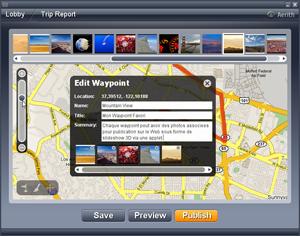Mashups Aren’t Just for Web Pages
- By Matt Stephens
- August 16, 2006

Yesterday I pointed to DeveloperWorks’ introductory article on web mashups. That’s all well and good, of course; but let’s not forget that mashups don’t have to be web-based.
There’s always something interesting going on at SwingLabs, and Aerith tops the bill.
(Okay, strictly speaking Aerith isn’t part of SwingLabs, but it’s closely associated with it, and Aerith’s mapping component is due to be moved over to SwingLabs’ SwingX project, where it will be further developed for general use. Phew, so that’s the qualifier out of the way).
So anyway… It’s a mashup… but it’s written in Swing. It’s a proof-of-concept, combining three web services: Google Maps, Flickr, and Yahoo’s geocoding service, all in one rich-client GUI. Its “wow factor” is that it shows that mashups can be done in a “thick client” just as easily (if not more so) than in a browser.
Aerith’s website describes a Swing mashup as a “Smashup”, which seems apt to me, given that every time I hear “mashup” I think of steaming-hot mashed potato (of the artificial kind).
At the moment, Aerith is in something of a gestational stage of development – there’s currently no binary download, annoyingly – although there is a Java WebStart version that, try as I might, I just couldn’t get to run. (No error messages, just a System.exit).
But let’s give them time, and see what the product is like in another month or two. The concept of a “Swing Mashup” could be exactly what Java needs right now to fuel its reappearance on our desktops.
In fact, if Sun were to pick up on Aerith’s potential and market Java WebStart as a “rich mashup platform” (don’t cringe!), it could turn out to be something of a killer app for desktop Java.